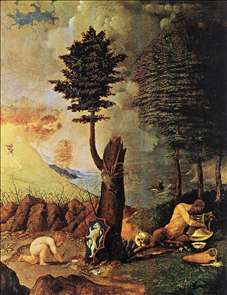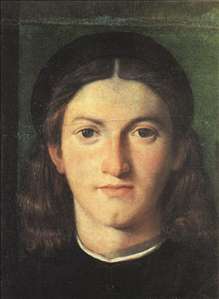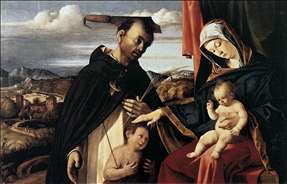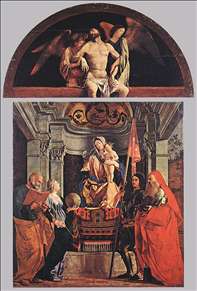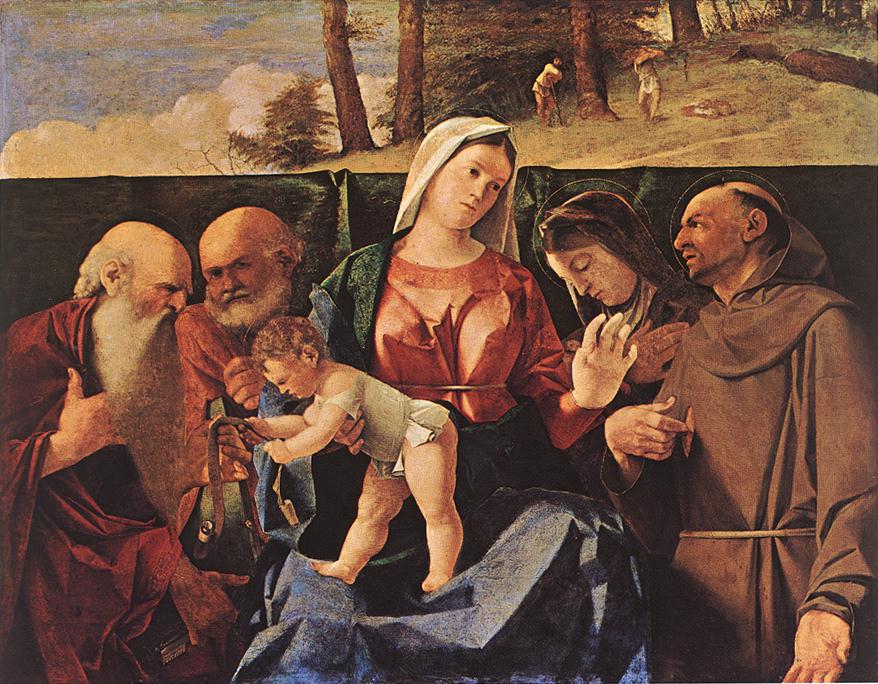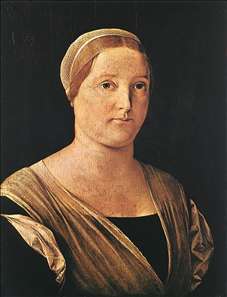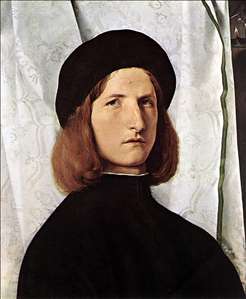Italian painter. According to
Vasari, he trained with
Giorgione and
Titian in the studio of Giovanni Bellini, but he worked many places apart from Venice, had an idiosyncratic style, and stand somewhat apart from the central Venetian tradition. In 1508-12 he was in Rome, then lived mainly in Bergamo until 1526, when he returned to Venice. From 153o he worked mainly in various towns in the Marches, and in 1554, when he was partially blind, he became a lay brother at the monastery at Loreto, where he died.
His rootless existence reflects his anxious, difficult temperament and his work is extremely uneven. It draws on a wide variety of sources, from Northern Europe as well as Italy, but at the same time shows acute freshness of observation. He is now perhaps best known for his portraits, in which he often conveys a mood of psychological unrest ( Young Man in his Study, Kunsthistorisches Museum, Vienna), but he worked mainly as a religious painter. An outstanding example of how original and poetic his altarpieces could be is The Annunciation in the church of Sta Maria sopra Mercanti at Recanati - a bizarre and captivating work full of brilliant colours and lighting effects, odd expressions and poses, and unusual and beautifully painted details, including a startled cat.
